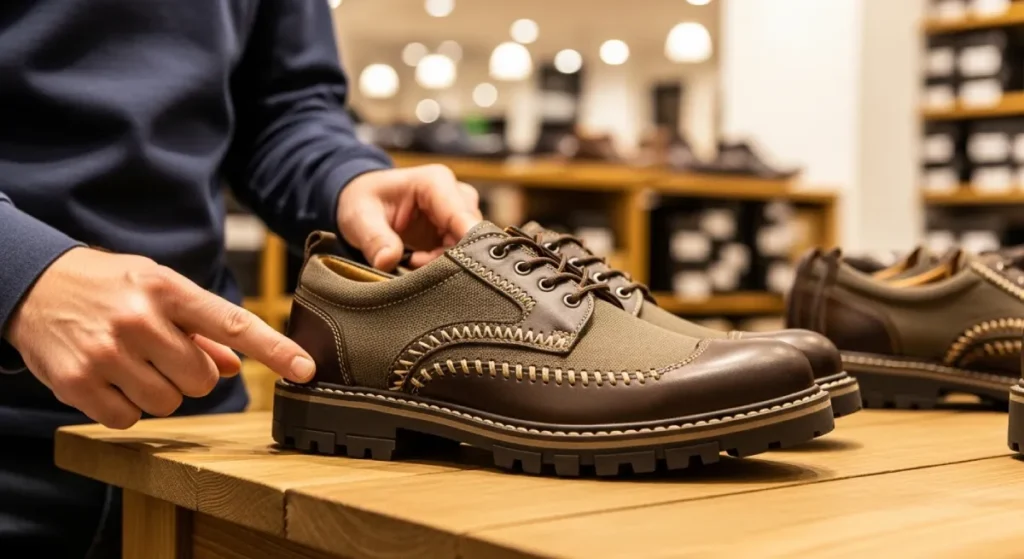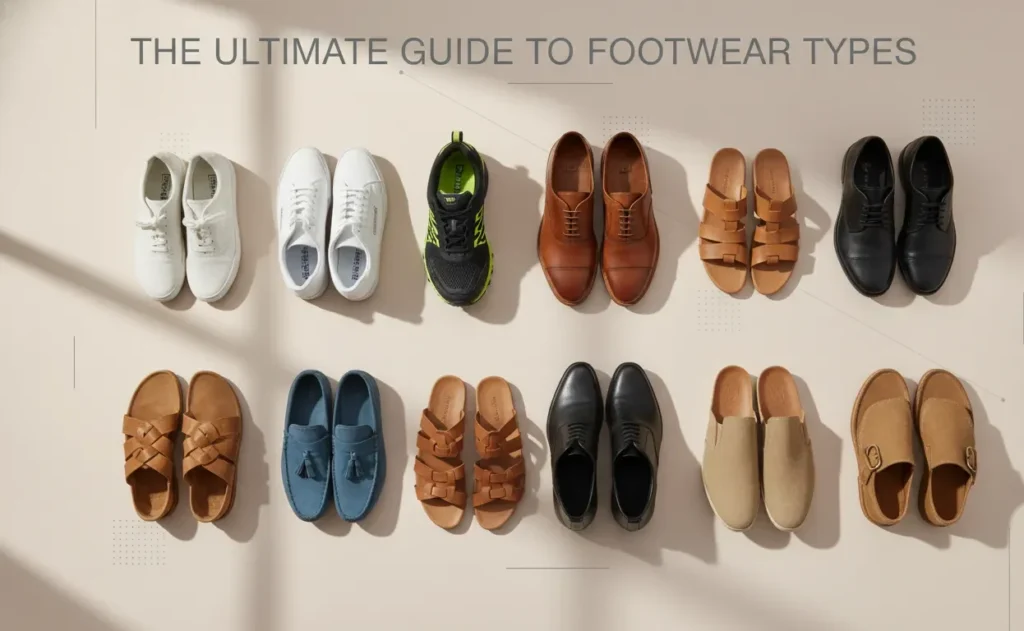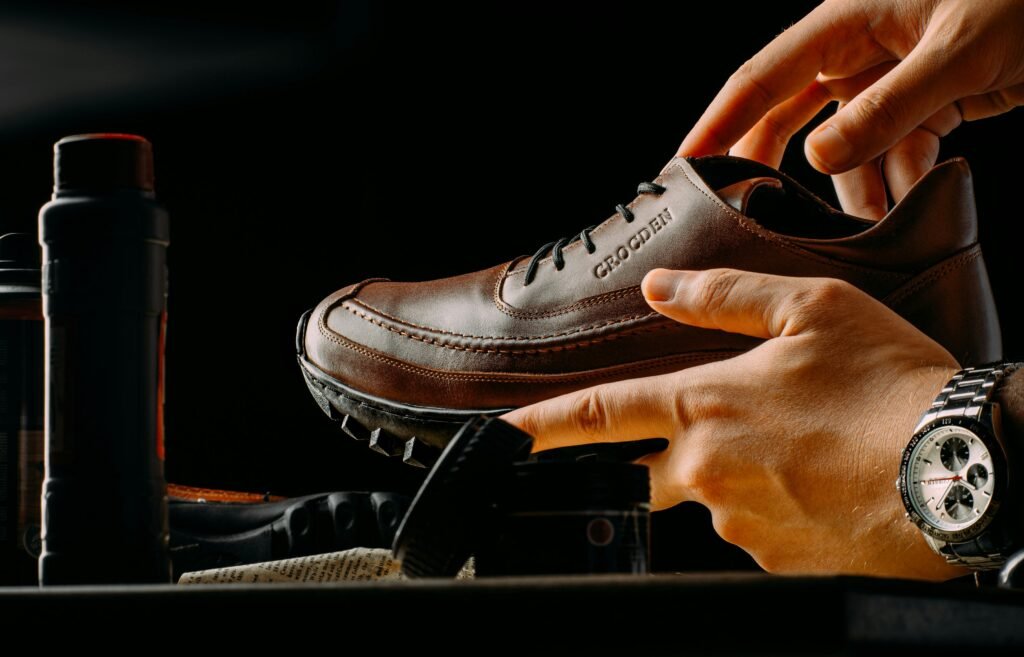Best Quality Non-Brand Shoes – Buyer’s Guide
When it comes to buying shoes, most people chase popular brand names, assuming high price means high quality. But here’s a truth I’ve learned over 18+ years in the footwear industry:
You can get top-quality shoes even without a famous logo — if you know what to look for.
In fact, I’ve helped countless customers pick non-brand shoes that lasted for years, offered solid comfort, and cost half or even less than their branded counterparts.
But there’s a catch: not every non-branded shoe is worth your money.
That’s why this guide exists — to show you exactly how to spot a good-quality non-brand shoe, using practical, in-store knowledge, not just theory.
🔍 Why You Should Read This Guide:
Whether you’re shopping from a street-side store in Bangladesh, a local market in Nigeria, an online seller in India, or even a discount store in the US —
this article will teach you:
- What truly makes a shoe “quality” (beyond the logo)
- How to visually inspect shoes for durability and comfort
- Real store tricks we use to test materials, soles, and insoles
- Common mistakes people make while buying cheap shoes — and how to avoid them
- What types of shoes are actually safe to buy as non-branded
Real-Life Proof Over Logo Hype
As a store-level footwear expert, I’ve seen:
- Students buy affordable non-brand sneakers that lasted 2 years of daily use
- Workers wear budget safety shoes that outperformed expensive pairs
- Office staff choose non-brand formals that never gave them blisters
- Shoppers unknowingly reject great shoes just because there was no “brand tag”
This guide combines all those observations into one practical, global buyer’s guide.
So if you’re ready to save money but still wear good shoes — let’s get started.
2. What Makes a Shoe Quality–Branded or Not?
Whether you’re buying a premium brand or a no-name local pair, quality in shoe doesn’t come from the logo—it comes from the build. Many non-branded shoes offer great value simply because they skip marketing costs but use good materials and smart construction.
From my 14+ years working in footwear stores, here are the 5 key signs of a quality shoe—regardless of the brand:
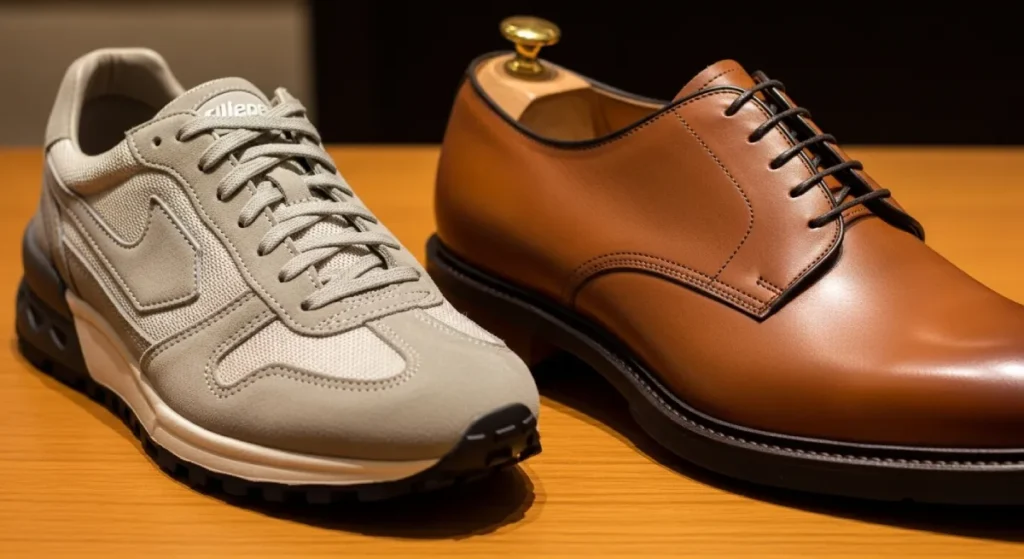
1. Upper Material Strength & Feel
The upper part of the shoe is what wraps around your foot. It should be:
- Strong yet flexible – not paper-thin or too soft
- Even in texture – no bubbles, loose grains, or uneven coating
- Breathable – if it’s mesh or knit, make sure air passes through easily
🧠 Pro Tip: Gently press and rub the upper. If it cracks, wrinkles too easily, or feels like plastic—it won’t last long.
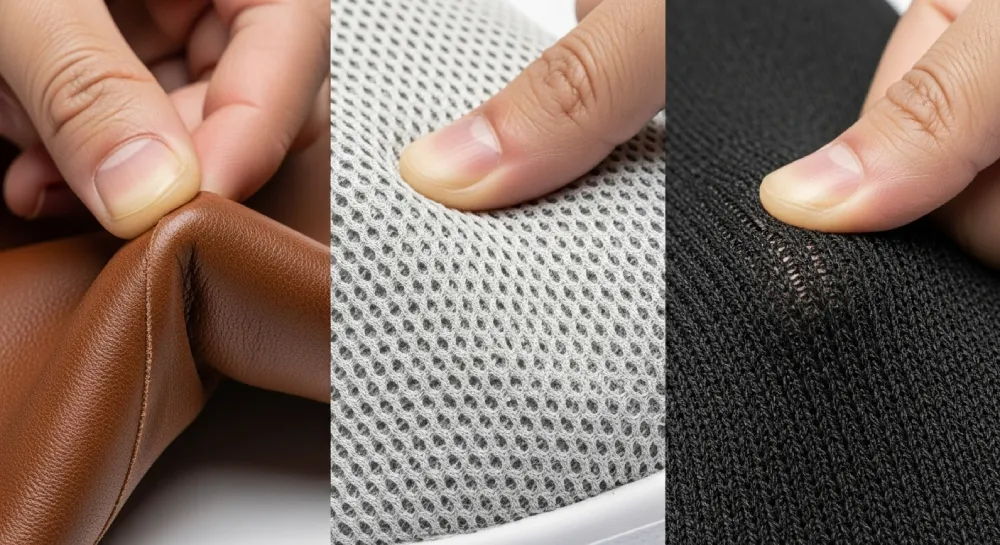
2. Sole Quality and Attachment
The outsole is the part that touches the ground. This is where many non-branded shoes fail, so inspect carefully:
- Rubber or TPR soles are ideal—they bend without breaking and resist slipping
- Firm attachment to the upper—no open glue marks, no loose edges
- Flexibility Test: Hold both ends of the shoe and twist lightly. A quality sole will bend and return to shape
👣 Real Store Check: I always twist the shoe side-to-side and do a mini bounce test on the floor. If it makes a loud click or crack sound, avoid it.
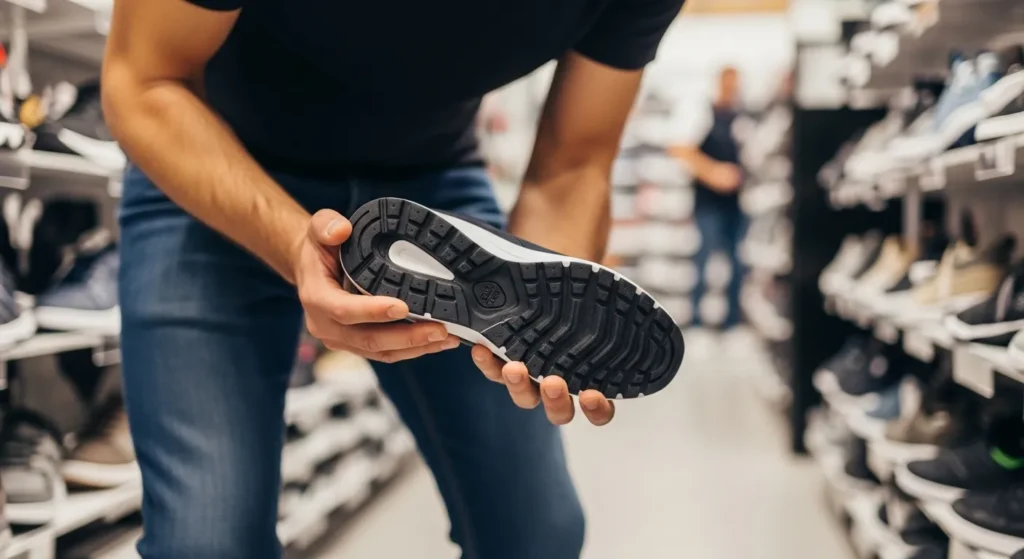
3. Stitching & Finish
Quality shoes have:
- Tight, even stitches
- No loose threads
- Clean finishing around the edges
- No over-glued or under-glued areas
📌 Rule of Thumb: If the shoe looks like it was quickly made, it probably was. Good stitching = long life.
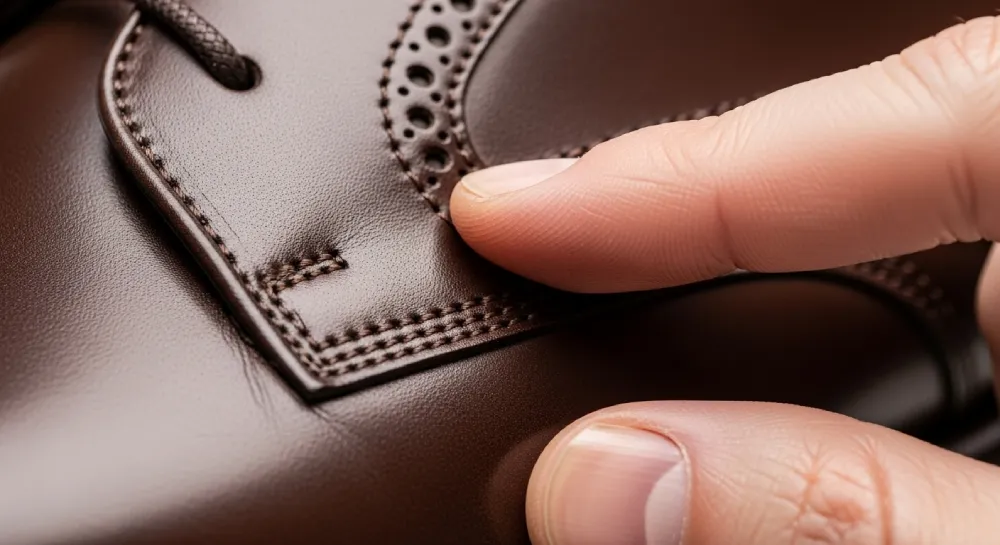
4. Comfortable Insole and Inner Lining
You can’t see this from outside—but it matters the most:
- Press the insole with your thumb. Does it bounce back? That’s a good sign.
- Look for arch support (a slight curve in the middle of the sole)
- Check the heel padding and tongue softness—no one likes blisters!
👞 Store Tip: I always tell customers to walk 10 steps inside the shop. If anything feels off in those first steps, it will only get worse.
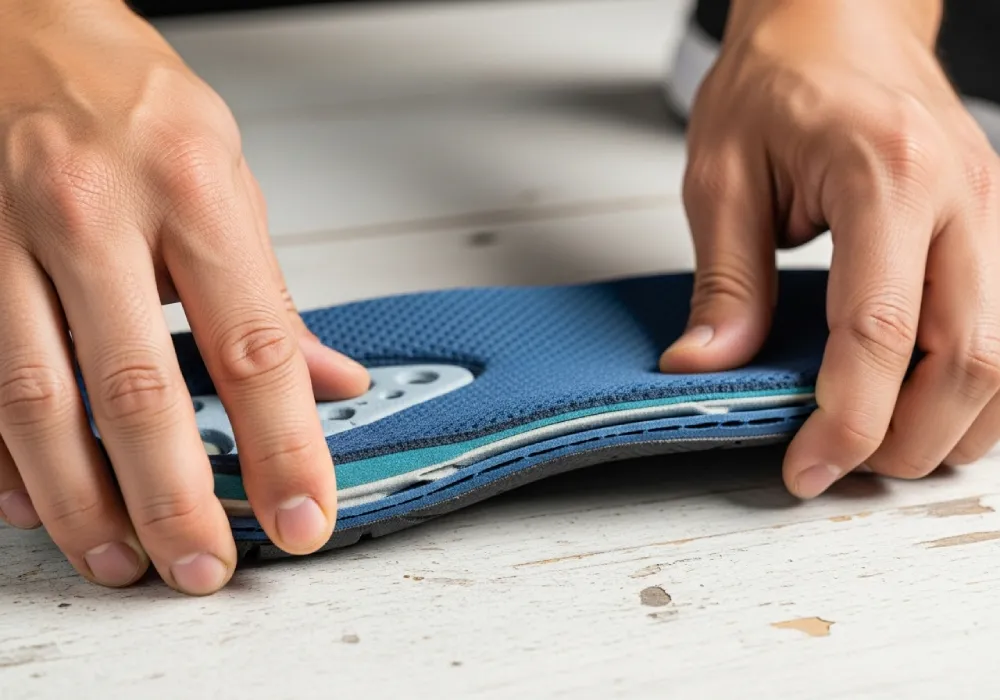
5. Fit, Balance & Overall Feel
A quality shoe will feel:
- Well balanced when you stand
- Stable—no ankle wobble or side slippage
- True to size—not too tight or too loose
Even in non-branded shoes, there are manufacturers who pay attention to fit and balance. If the shoe feels right—it usually is.
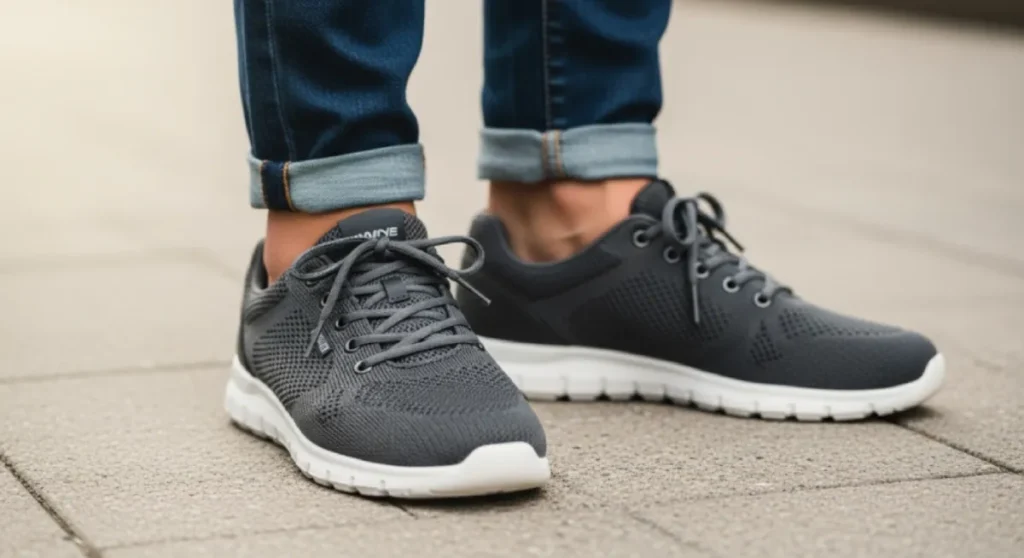
3. Common Buyer Mistakes (And How to Avoid Them)
Even though many buyers are smart and budget-conscious, I’ve seen time and again how simple mistakes can lead to poor purchases — especially when buying non-branded shoes. Most of these mistakes happen not because the buyer lacks sense, but because they don’t know what to look for beyond the surface.
Below are the most common errors people make, along with easy-to-follow solutions based on years of in-store experience:
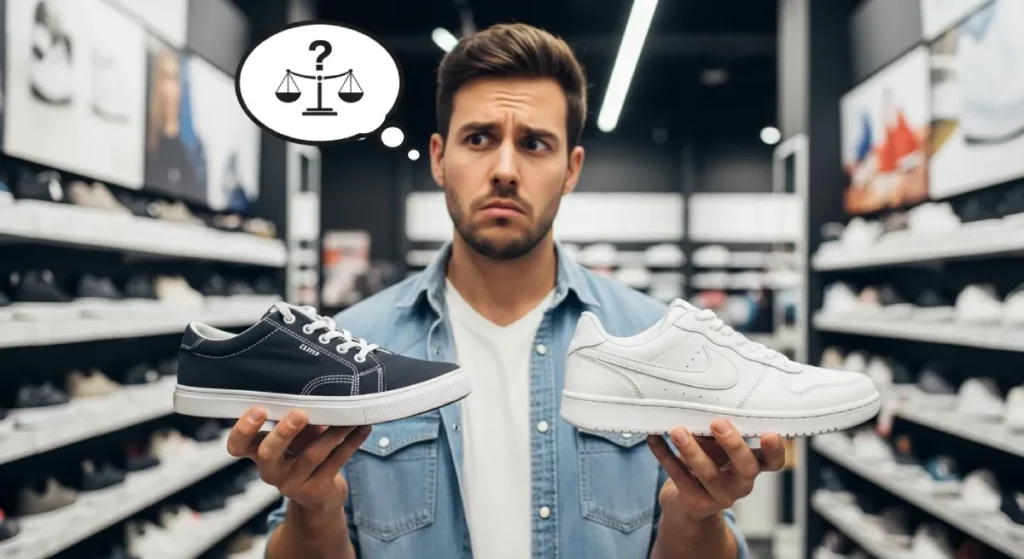
Judging by Looks Alone
A shoe might look stylish and modern, but that doesn’t mean it will last. In fact, some of the flashiest non-brand shoes use cheap synthetic materials just to catch your eye. The shine fades, the glue gives out, and the comfort disappears within weeks.
How to Avoid It:
- Feel the shoe in your hands. Is it too light or plasticky? That’s often a red flag.
- Press the insole — if it feels like thin cardboard instead of foam cushioning, avoid it.
- Inspect the edges and sole — glue lines should be clean, no gaps or excess dripping.
🧠 Remember: Good shoes feel sturdy, even if they don’t scream “fashion.”
Overlooking Insole Quality and Support
Most people only notice bad insole support after a week of wearing the shoe — when heel pain or arch discomfort starts creeping in. Unfortunately, many non-branded shoes save money by cutting corners here.
How to Avoid It:
- Remove the insole if possible and check thickness and rebound. A flat, stiff insole is a no-go.
- Look for at least some arch curve in the midfoot — even a little is better than flat.
- If the shoe is otherwise great but the insole feels cheap, consider adding a separate memory foam insert.
👣 Rule of thumb: Comfort today means no pain tomorrow.
Buying Without a Return or Exchange Option
This one is especially common in street markets or online non-brand sellers. You pick a shoe, take it home, realize it hurts your foot — but there’s no going back.
How to Avoid It:
- Ask clearly: “Can I exchange if it doesn’t fit?” before buying.
- When buying online, always choose platforms with a return policy and real customer reviews.
- Take a photo or note the seller contact if buying from physical stalls — just in case.
🛍️ A refund isn’t always possible, but at least try to ensure one-time exchange is.
Ignoring Size Variations Between Non-Brands
Branded shoes usually follow a consistent sizing chart. But many non-brand manufacturers don’t. That means a “Size 42” in one store may fit very differently in another.
How to Avoid It:
- Try both shoes on — not just one. Some pairs are slightly uneven, especially in cheaper productions.
- Walk at least 10 steps. This exposes tightness, heel slippage, or side rubbing you wouldn’t feel from standing still.
- Try with socks similar to what you’ll normally wear — thick socks can change fit completely.
📏 Tip from experience: Always go by fit, not the number on the box.
Not Checking the Sole Grip and Flexibility
Buyers often forget that outsole grip is what keeps you safe from slipping. A shiny, plastic-like sole may look fine on the rack but become dangerous on smooth or wet surfaces.
How to Avoid It:
- Rub the bottom with your thumb — if it feels too smooth or plasticky, avoid it.
- Do the twist test: Hold the toe and heel and twist gently. The sole should flex without feeling weak.
- Press your thumb into the sole. A little softness means shock absorption; too hard means poor cushioning.
⚠️ Slippery soles are a hidden hazard, especially in rainy countries.
Be a Smart, Not a Fast Buyer
Many of these mistakes are 100% avoidable if you take just 2 extra minutes in-store or double-check the details online.
Think of it like this: you’re not just buying shoes — you’re investing in your comfort, health, and daily walk.
And like I always tell my customers:
“If it feels wrong now, it won’t feel better later.”
4. How to Find Quality Non-Branded Shoes Online (for Global Buyers)
Buying non-branded shoes online can feel risky — no brand, no try-before-you-buy, and no trusted store assistant. But don’t worry. With the right approach, you can grab top-quality, budget-friendly shoes online from anywhere — India, Bangladesh, Nigeria, Philippines, UAE, the US — without getting scammed or disappointed.
As someone who has guided both offline and online buyers, let me break it down for you, step by step:
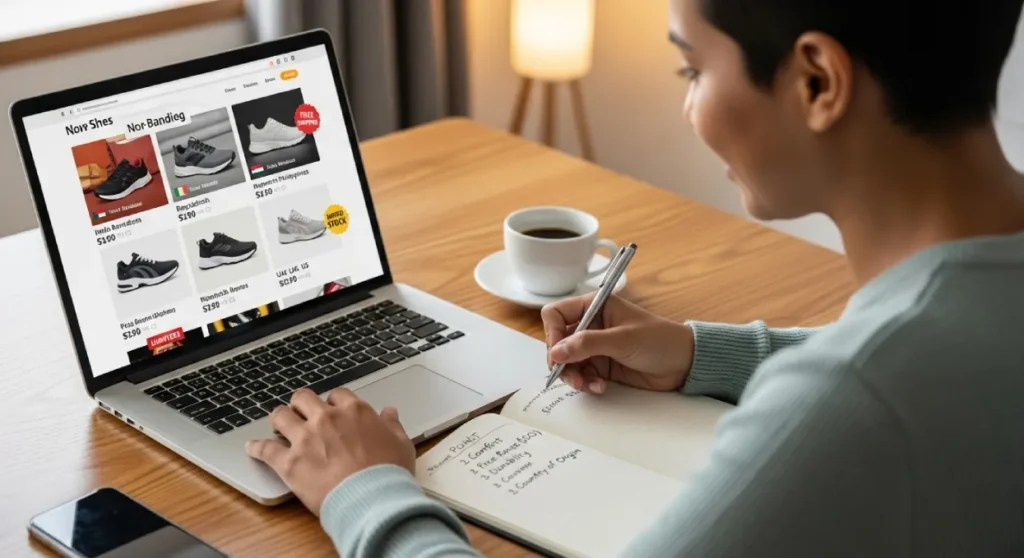
Check Seller Reputation & Product Reviews
The seller is more important than the shoe name. Whether you’re buying from Amazon, Flipkart, Daraz, AliExpress, Shopee, or a local e-store:
- Look for 4+ star ratings with at least 20–30 reviews
- Read actual buyer comments — especially those with photos
- Focus on fit, comfort, and durability reviews, not just delivery speed
📸 Bonus Tip: Reviews with real-life shoe photos are gold. Zoom in to inspect stitching and sole finish.
Make Sure There’s a Return or Exchange Policy
Buying a shoe online with no return policy = high risk. Always check:
- “7-day return,” “free return shipping,” or “exchange allowed”
- Platforms like Amazon, Myntra, Daraz, and Shopee usually offer return options
- Local sites? Message the seller before buying: “Can I return if size doesn’t fit?”
🧾 Footwear Expert Tip: Even branded shoes get returned — it’s smart, not picky.
Quick Checklist Before You Click Buy:
- Did you search with specific quality keywords?
- Did the shoe have good reviews + clear customer images?
- Did you check materials like sole type and insole padding?
- Is there a size chart AND return option?
- Did you verify seller ratings?
If you can tick all five — ✅ you’re buying smart!
| Feature to Look For | What It Should Say |
|---|---|
| Upper Material | Genuine leather, PU, mesh, canvas |
| Sole Type | Rubber, TPR, EVA (avoid just plastic) |
| Insole | Cushioned, memory foam, arch support |
| Closure & Fit | Adjustable, lace-up, elastic grip |
| Sizes Available | Include full chart with CM or INCH reference |
Red Flag Words: Fashion only, party wear, no return– these often mean style over substance.
Use a Foot Size Chart to Double-Check Fit
Non-branded shoes may not follow international sizing standards. Always:
- Measure your foot length in cm or inches using a ruler
- Compare it to the site’s sizing chart (US, UK, EU, CM)
- If you’re between sizes, go half-size up and use a thicker insole or socks
👣 Helpful Idea: Some online stores show a “Fit True to Size” meter — trust those insights from real buyers.
5. How Smart Buyers Win with Non-Branded Shoes – Tips & Tricks
You don’t always need a big brand to make a smart shoe purchase.
Yes, you read that right!
Many customers around the world are discovering high-quality, stylish, and durable shoes — without spending a fortune. All it takes is knowing what to look for and avoiding a few common mistakes.
At Footinst.com, we’re here to help you become one of those winning buyers with these real, store-tested tips!
1. Look Beyond the Logo
Brand doesn’t equal quality — but material does.
✅ Check the upper: strong, flexible, clean finish
✅ Test the sole: bend it, press it
✅ Look at the stitching: clean and even
Quick Tip: Give the shoe a light twist. If it snaps or creaks — avoid it.
2. Focus on Fit, Not Fame
Non-branded shoes often vary slightly in size.
✅ Always try both shoes on (not just one)
✅ Wear socks similar to your usual pair
✅ Walk around for 10–15 steps to test comfort
Bonus Tip: Measure your foot in cm/inches and check the store’s size chart carefully.
3. Save Smart, Spend Wise
Buying non-branded doesn’t mean going cheap — it means buying clever.
✅ A well-made non-brand shoe can save you 40–70%
✅ Use the savings to upgrade your insole, socks, or get a backup pair
Real Experience: Many workers and students use budget shoes that last 1–2 years — just by choosing smartly.
4. Read the Details Like a Pro
If you’re shopping online, always check:
- Upper material (Genuine Leather / PU / Mesh)
- Sole type (Rubber, TPR, EVA – avoid plastic)
- Cushioned insole or arch support
- Customer reviews with real photos
- Return/exchange policy
Buying smart online = fewer regrets later.
5. Pay Attention to the Small Things
Uneven stitching? Skip it
✅ Visible glue or open edges? Not a good sign
✅ Feels too light or plasticky? Check the build
✅ Wobbly heel? Poor balance — avoid
Little details speak volumes about the shoe’s real quality.
Smart buyers don’t just follow logos — they follow logic.
Today, you’re not just buying shoes — you’re making a smart decision for your feet, your wallet, and your comfort.
So the next time you shop, skip the hype and trust the signs of real quality. You’ll walk away a happy, money-saving winner.
A well-picked non-branded shoe
👣 Comfort
💰 Savings
😎 Confidence
Final Words from a Shoe Seller
Over the years, I’ve seen thousands of shoes come and go — branded, unbranded, expensive, cheap. But what truly lasts is not the name on the box — it’s the quality, comfort, and how well the shoe fits your life.
Non-branded shoes often get ignored or looked down upon. But I’ve personally worn and sold non-brand pairs that outlasted branded ones. The difference lies in knowing what to look for — the materials, the sole, the fit, the build. Not the logo.
If you follow the tips I’ve shared in this guide —
✅ Test the upper and sole
✅ Feel the insole
✅ Check stitching
✅ Walk before you trust
✅ And buy from a reliable seller —
then you’re not just saving money.
You’re making a smart footwear decision based on real value.
Remember, your feet do all the hard work every single day.
They carry your weight, your dreams, and your journey.
So even if you’re on a budget, they deserve something that supports and protects them.
“Good shoes take you good places — and they don’t have to be expensive to be good.”
Thanks for trusting this guide. If you found it helpful, share it with someone who’s planning to buy shoes soon — and visit footinst.com for more real-world shoe buying advice, reviews, and expert insights.
Buying Tips from Footinst.com — Helping You Choose the Right Shoes Without Confusion
FAQ – Non-Branded Shoe Buying Guide
Are non-branded shoes always low quality?
Not at all. Many non-branded shoes are made in the same factories as branded ones. The key is to check build quality, stitching, materials, and customer reviews.
How can I identify good quality in a non-branded shoe?
Look for:
- Neat stitching
- Strong and flexible sole
- No glue marks or loose edges
- Comfortable fit on both feet
Do non-branded shoes last as long as branded ones?
If chosen wisely, yes. Many non-branded shoes offer 1–2 years of durability depending on usage and care.
What materials should I avoid in non-branded shoes?
Avoid:
- Thin plastic soles
- Shiny, cheap synthetic uppers
- Slippery bottom grip
- Non-cushioned inner sole
Is it safe to buy non-branded shoes online?
Yes, if you:
- Read product specs carefully
- Check real user reviews and photos
- Use trusted eCommerce sites
- Understand return policies
How do I check size accuracy in non-branded shoes?
Measure your feet in cm or inches, then compare with the store’s size chart. Also, read if the shoe runs small, large, or true to size from user reviews.
Why are non-branded shoes much cheaper?
They save costs on:
- Big advertising
- Packaging
- Celebrity endorsements
But that doesn’t mean they skip on quality if the factory is reliable.
Can I use non-branded shoes for daily wear?
Absolutely. Many customers use them for office, school, travel, and casual outings. Just make sure it’s comfortable and fits your purpose.
Do non-branded shoes come with warranty or guarantee?
Most don't, but many sellers offer easy returns or replacements. Always read the product’s return/exchange policy.
Is it possible to find stylish non-branded shoes?
Yes! Many local and online brands copy trendy designs. You’ll find options in loafers, sneakers, sandals, boots — without breaking the bank.
Can non-branded shoes be used for sports or gym?
Yes, if the shoe has:
- Breathable upper
- Flexible sole
- Proper grip and cushioning
Always test comfort before using for high activity.
What if the non-branded shoe doesn't fit well?
If bought online, return or exchange it quickly. If bought in-store, test both feet and walk a few steps before purchasing.
Why does Footinst recommend non-branded shoes?
Because we’ve seen thousands of customers find real value in affordable, well-made shoes — when chosen with proper guidance. We believe quality matters more than the logo.

